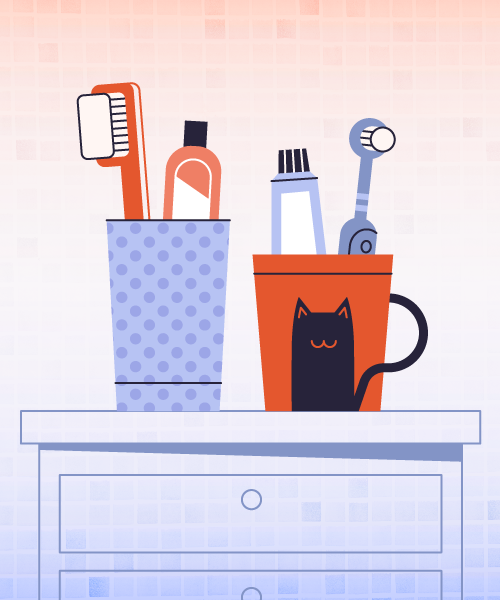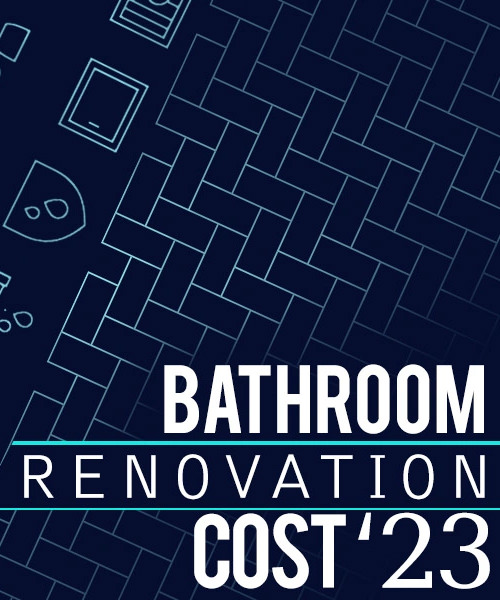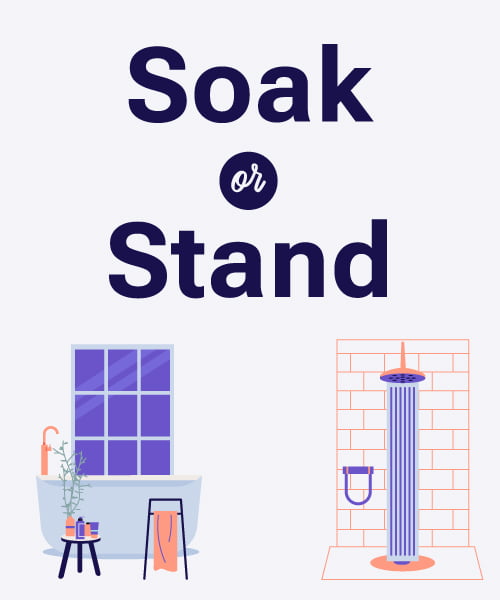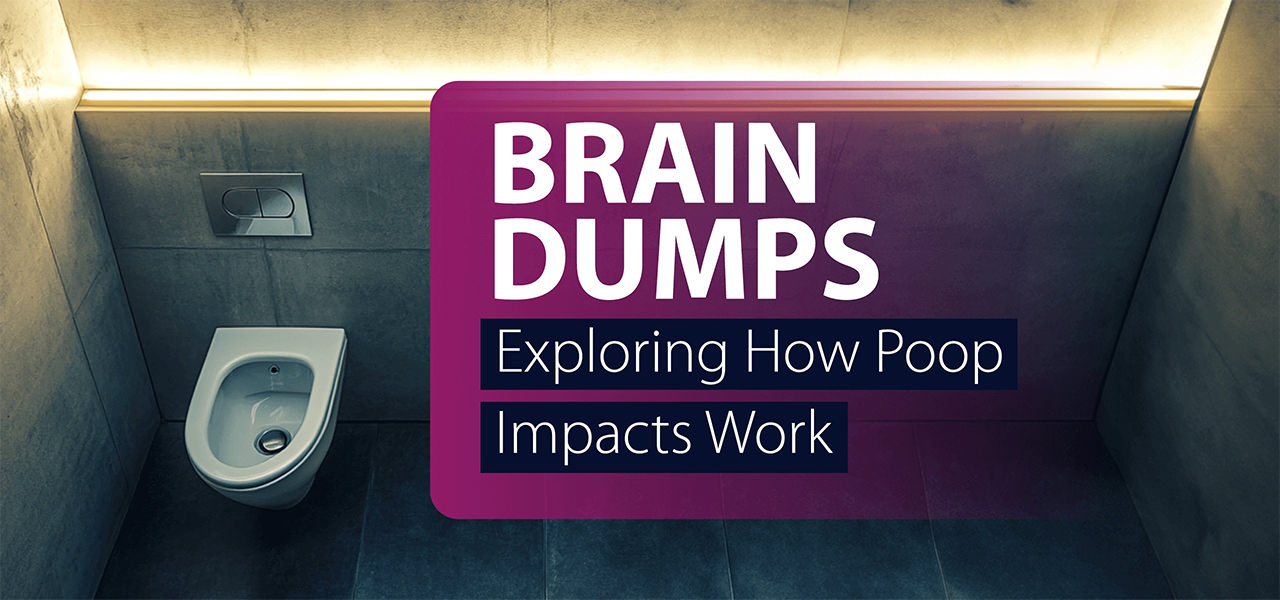
When it comes to workplace bathroom habits, there's more happening behind closed doors than meets the eye. From the anxiety of using the loo at work to the impact bathroom breaks have on productivity, these habits influence employee comfort, efficiency, and even company costs. This report uncovers the surprising and sometimes awkward realities of bathroom behaviour in the workplace, revealing how people navigate this often untalked-about aspect of the workday.
Key Findings
- 1 in 12 employees have never pooped at work, and 34% are scared to do so.
- Nearly 1 in 5 employees (19%) refuse to poop at work, while 1 in 4 choose to hold it in all day and wait until they get home.
- Companies lose an estimated average of $3,565 per remote employee and $2,833 per in-office employee annually due to time spent in the bathroom during work hours.
- 61% of employees have noticed a colleague's poop in the restroom at work, and 1 in 16 admit they don't courtesy flush.
Pooping at Work
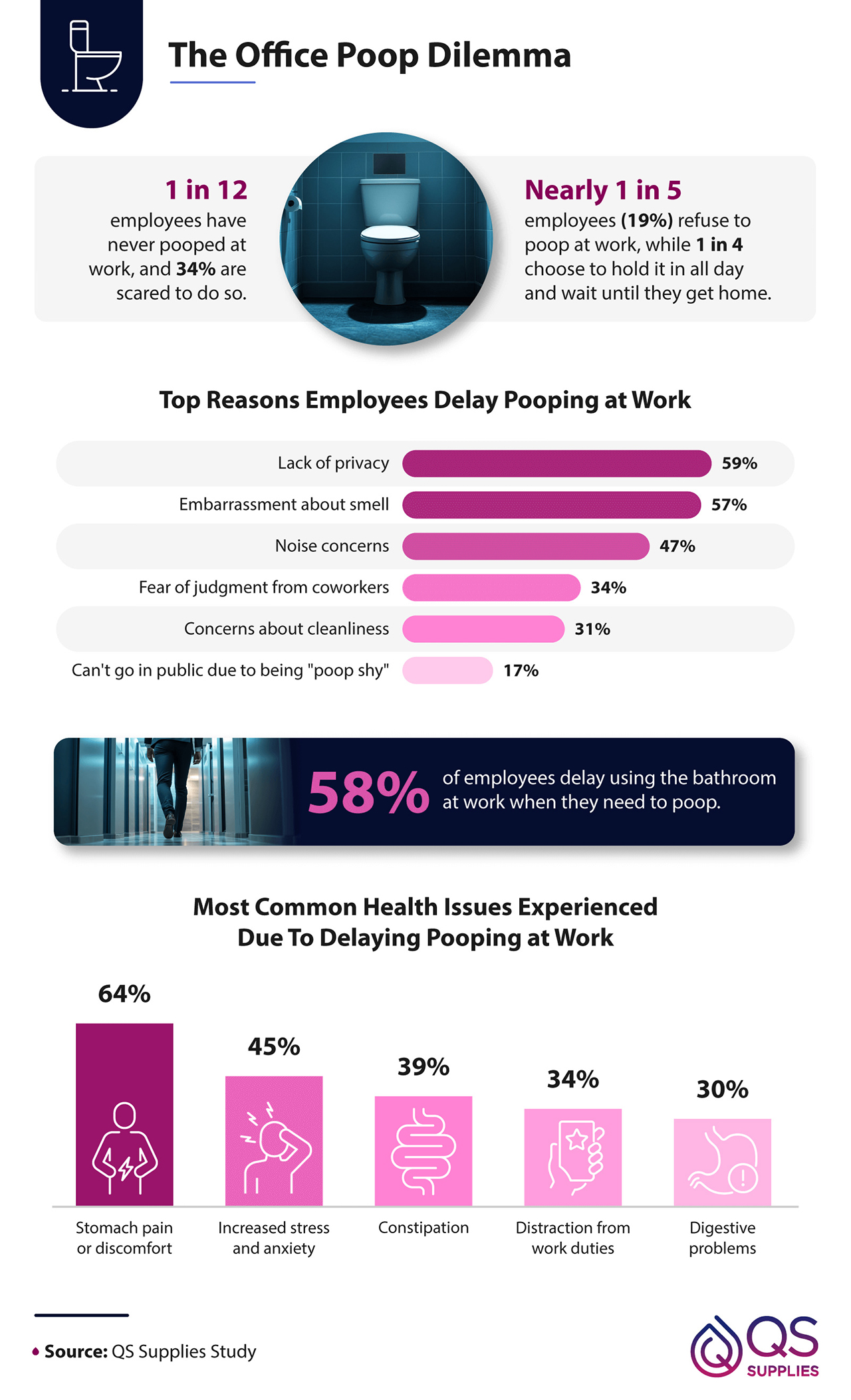 Click here to view full size
Click here to view full size
Workplace bathroom habits can reveal a lot about employee comfort levels, with many workers feeling uneasy about using the facilities.
- 1 in 12 employees (8%) have never pooped at work, while 34% are scared to.
- The youngest generation feels the impact of bathroom anxieties more than most, with 11% of Gen Z employees having never pooped at work and 36% being scared to do so.
- Nearly 1 in 5 employees (19%) refuse to poop at work, and 1 in 4 hold in their poop all day until they return home.
- Women face greater challenges when it comes to using workplace bathrooms:
- Almost half of women (48%) are scared to poop at work, compared to 19% of men.
- More women (22%) than men (15%) refuse to poop at work.
- Women (30%) are more likely than men (21%) to wait until they get home.
Flushing Away Time
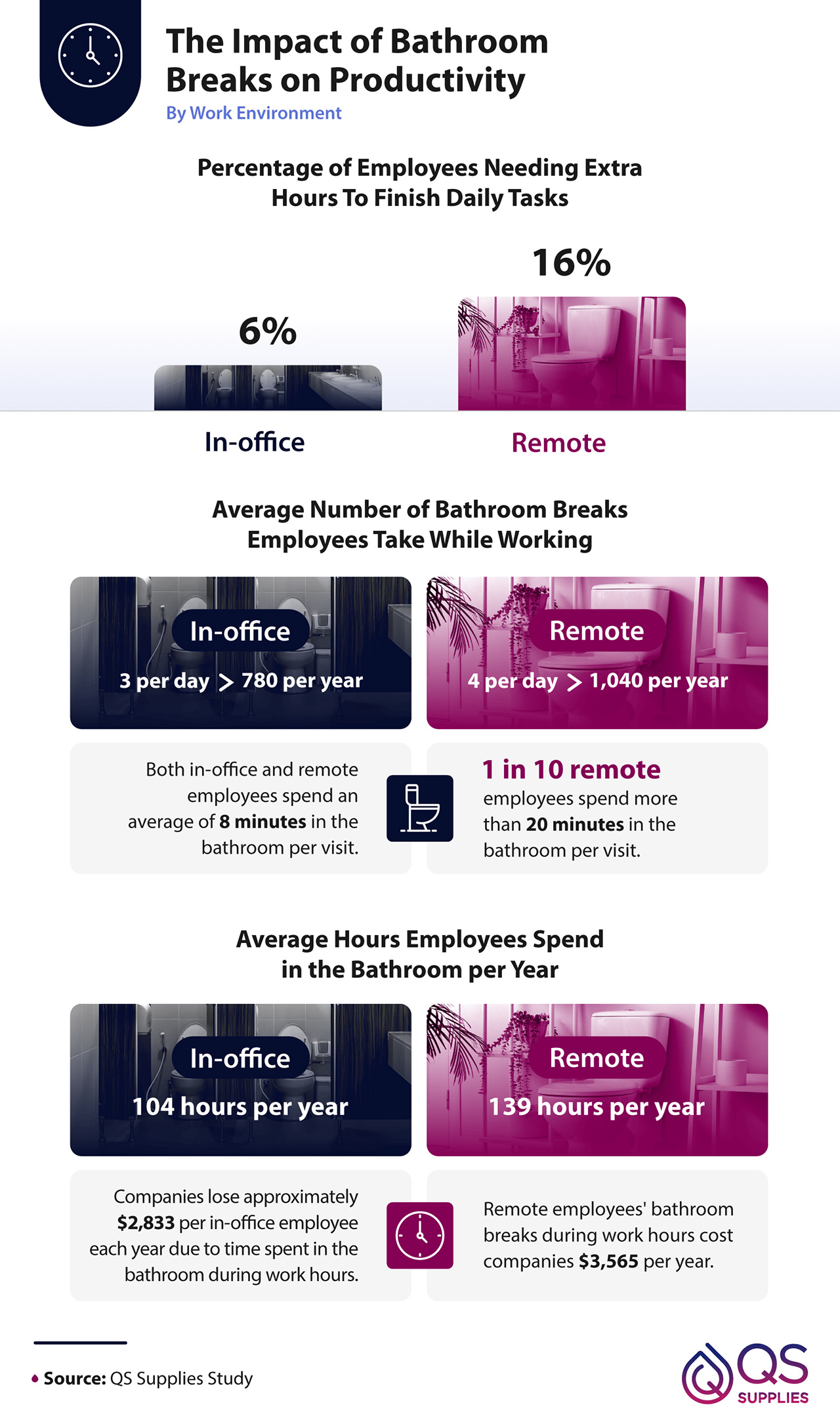 Click here to view full size
Click here to view full size
Though bathroom breaks might seem insignificant, they can have a measurable impact on productivity. This section explores how time spent in the restroom affects different groups of employees and the financial costs associated with these breaks.
- Gen Z remote workers were the most likely to need extra time outside regular work hours to complete their tasks, with 24% reporting this issue.
- On average, they spent 18 minutes a day in the bathroom, accumulating 90 minutes per week, or 78 hours annually.
- Estimated total yearly cost of employee bathroom breaks by generation:
- Millennials: $2,928
- Gen X: $2,579
- Gen Z: $2,460
- Baby boomers: $2,424
- Estimated total yearly cost of employee bathroom breaks by industry:
- Tech: $3,376
- Marketing: $3,157
- Finance: $2,956
- Healthcare: $2,600
- Retail: $2,252
- Hospitality/Food/Beverage: $1,800
- Estimated total yearly cost of employee bathroom breaks by work environment:
- Remote: $3,565
- In-office: $2,833
- Hybrid: $2,758
- Men incur a greater estimated yearly expense from workplace bathroom breaks than women — $3,060 vs. $2,311, respectively.
Behind Closed Doors at Work
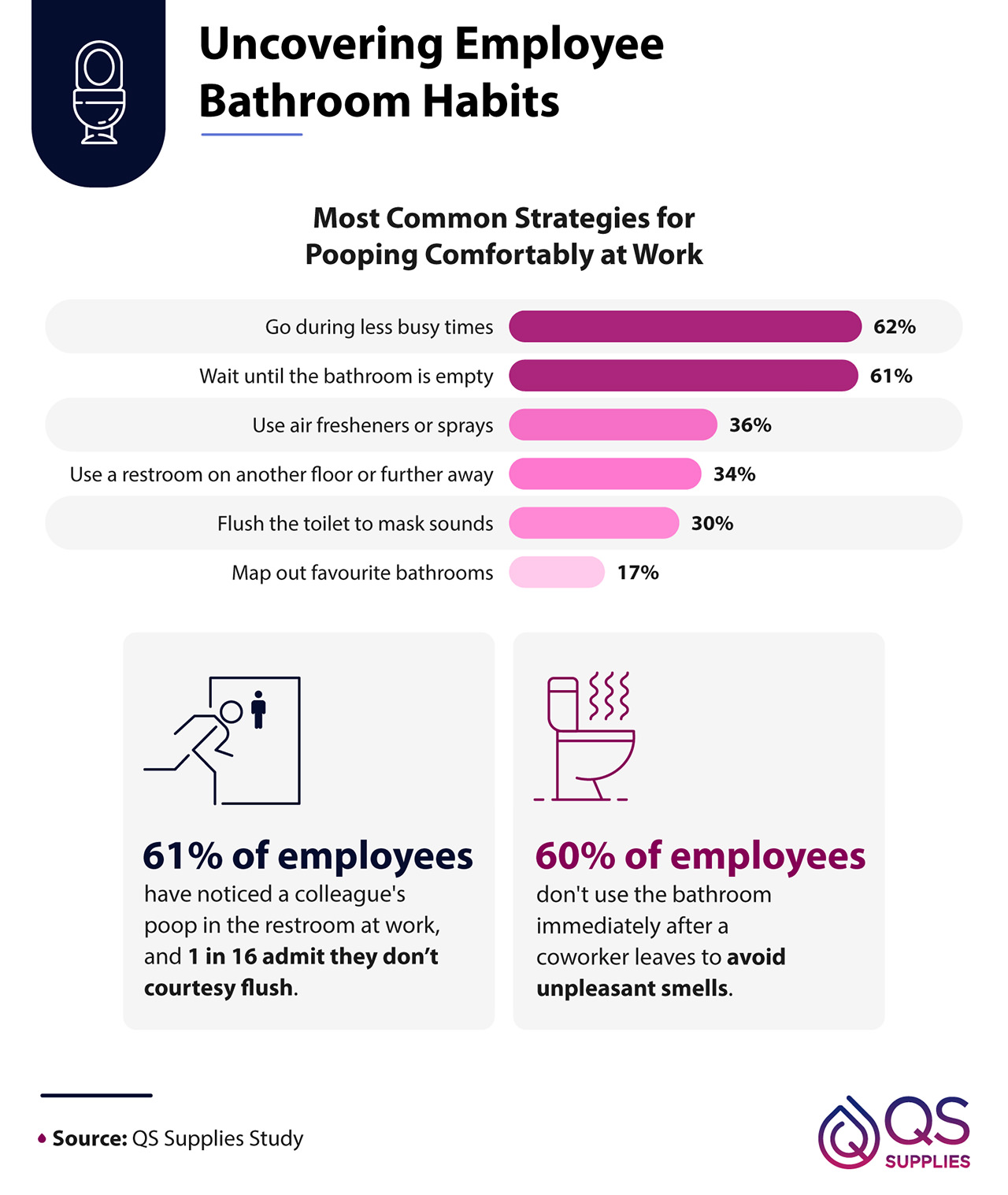 Click here to view full size
Click here to view full size
Navigating bathroom habits in the workplace can be a delicate task, and many employees adopt specific strategies to feel more comfortable.
- Restroom encounters at work can be less than ideal: 61% of employees have noticed a colleague's unflushed poop in the toilet, and 1 in 16 don't bother with a courtesy flush.
- Women (67%) are more likely than men (55%) to wait until the bathroom is empty to go.
- Women (37%) are more likely than men (21%) to flush the toilet multiple times to mask sounds.
- Men seem less concerned about keeping things quiet: 47% fart in front of coworkers, compared to 27% of women.
- In some unfortunate situations, bathroom accidents have happened: 9% of millennials and 5% of Gen Z workers have pooped themselves at work.
Workplace Bathroom Etiquette
While workplace bathroom habits are rarely discussed openly, they can influence everything from employee comfort to company costs. Whether it's navigating privacy concerns, managing bathroom-related anxiety, or simply trying to find a quiet moment, these behaviours shape how employees experience their workday. By understanding and accommodating these needs, employers can create a more comfortable and productive work environment, benefiting both workers and the bottom line.
Methodology
For this campaign, we surveyed 1,003 employees to explore their bathroom habits at work. Of the respondents, 50% were in-office workers, 37% were remote, and 13% worked in a hybrid model. The gender and generational breakdowns were as follows:
- Gen Z: 15%
- Millennials: 53%
- Gen X: 28%
- Baby Boomers: 5%
- Men: 44%
- Women: 55%
- Non-binary: 1%
To calculate the cost of employees going to the bathroom, we first estimated the average hourly wage based on the annual salary, assuming 260 workdays per year. Then, we multiplied the hourly wage by the total hours employees spend in the bathroom annually. This allowed us to quantify the annual cost to companies for the time employees spend in the bathroom.
The data was collected in September 2024.
About QS Supplies
QS Supplies is a premier retailer of high-quality bathroom products in the UK. Our extensive range includes luxurious shower enclosures, stylish basin taps, and elegant bathroom furniture, ensuring your bathroom reflects your personal style and meets your practical needs.
Fair Use Statement
This content is free to share for noncommercial use. Please remember to link back to the original article.

